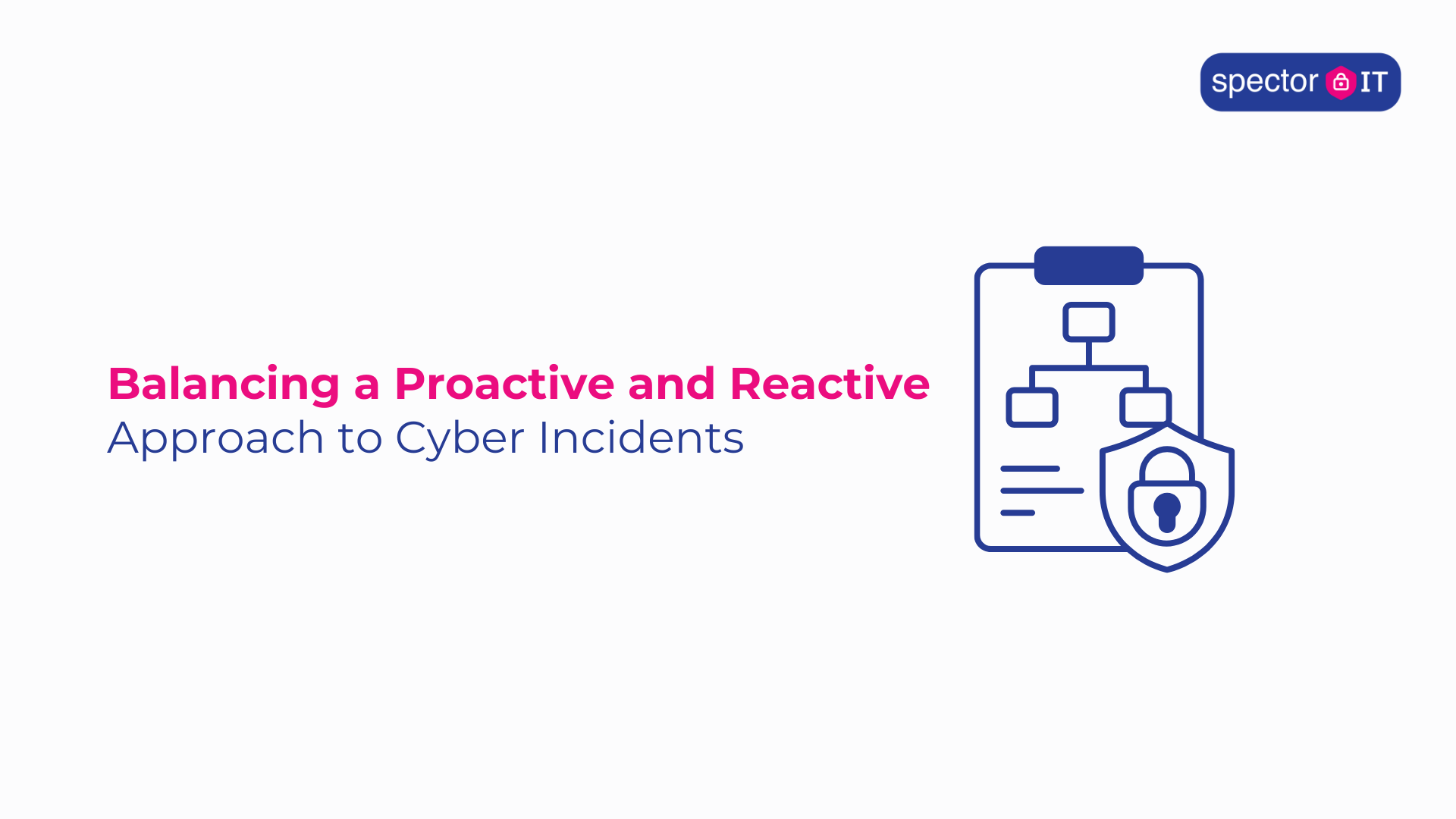
Balancing a Proactive and Reactive Approach to Cyber Incidents
A proactive and reactive approach to cyber incidents is no longer optional—it’s the standard for resilient businesses. From ransomware attacks to social engineering, incidents today aren’t just about downtime—they carry reputational damage, legal exposure, and operational chaos. The key isn’t just how fast you react—but how well you anticipate and prepare.
In this post, we outline the building blocks of a mature approach to cyber risk that combines both proactive defences and responsive planning, grounded in NIST and real-world best practices.
Why your approach to cyber incidents needs to evolve
1.Understanding the cost of inaction
According to IBM’s Cost of a Data Breach 2024, the average breach costs SMEs €4.3 million globally—driven by downtime, data recovery and customer churn. Even minor incidents like phishing or misconfiguration errors can erode customer trust and regulatory standing.
If you’re unsure how your business would cope with an attack, this article is your starting point.
2. Proactive Approaches: Build Resilience Before the Breach
2.1. Strengthen password hygiene and access control
Simple password reuse remains a leading vulnerability. A proactive strategy means enforcing multi-factor authentication (MFA), using passphrases instead of passwords, and conducting regular reviews of who has access to what.
Check out our Why Your Business Needs Stronger Passwords
2.2. Invest in employee awareness – your human firewall
Human error still accounts for over 80% of breaches, per Verizon’s 2024 DBIR. Regular phishing simulations and engaging, real-world training make staff your first line of defence.
Read: SBA Cybersecurity for Small Business
2.3. Keep software and systems up to date
Patch Tuesday isn’t just for IT teams. Businesses should run monthly updates across all critical systems—especially endpoints, firewalls, and email gateways. Automating this process reduces the chance of oversight.
2.4. Use reputable VPNs and protect remote endpoints
In a remote or hybrid setup, your digital perimeter is wherever your employees are. Enforce VPN use, leverage mobile device management (MDM), and deploy endpoint protection with ransomware rollback.
2.5. Limit permissions & segment your network
Use the principle of least privilege: only give access where it’s truly needed. Create separate zones for guest devices, finance systems, and development environments. This helps contain breaches before they spread.
2.6. Backups: your insurance policy
A good backup is useless if it’s not immutable or tested. Follow the 3-2-1-1 rule: three copies, two types of storage, one off-site and one immutable. Test quarterly. Align to your Recovery Time Objective (RTO) and Recovery Point Objective (RPO).
Learn more on Backup & Disaster Recovery
2.7. Perform routine cyber risk assessments
These help identify weak points in your policies, software stack or staff knowledge. A good risk review includes asset inventory, vulnerability scanning, threat modelling, and mitigation mapping.
Read: NIST Cybersecurity Framework – Identify Function
3. Reactive Approaches: Responding Effectively When the Worst Happens
3.1. Have an Incident Response Plan—and test it
Document key steps for breach containment, roles and responsibilities, communication plans and legal notification requirements. Include both internal and third-party contact points.
Use templates based on the NIST Incident Response Lifecycle:
-
Preparation
-
Detection and Analysis
-
Containment, Eradication and Recovery
-
Post-Incident Activity
Read: NIST Special Publication 800-61 – Incident Handling Guide
3.2. Log everything—and act fast on anomalies
Invest in a SIEM (Security Information and Event Management) system to consolidate logs across systems and flag suspicious activity in real-time. This speeds up containment and reduces data loss.
3.3. Communicate clearly and transparently
If customer data is affected, legal notification within 72 hours (under GDPR) is mandatory. But your customers, staff, and suppliers also need clarity. A reactive plan should include draft emails, press statements and internal memos to adapt quickly.
3.4. Conduct a post-incident review
Treat every breach like an audit opportunity. What worked? What failed? This learning loop helps you adjust policies, tooling and training. Always document the root cause and remediation steps.
4. The Ideal Balance: Proactive + Reactive = Resilience
Strategy Type – People
-
Proactive Actions – Security training, phishing simulations
-
Reactive Responses – Awareness reminders after near-misses
Strategy Type – Process
-
Proactive Actions – Written security policy, password management
-
Reactive Responses – Incident response plan & DR plan
Strategy Type – Technology
-
Proactive Actions – Patch management, MFA, backups
-
Reactive Responses – Log review, isolation, data restoration
Final Thoughts: Making Your Approach to Cyber Incidents Future Proof
Cybersecurity isn’t just a tech function anymore—it’s an operational necessity. A well-balanced approach to cyber incidents combines good habits, strong technology and responsive leadership. At Spector, we help businesses plan, implement, test and refine their cyber readiness—so they can survive and thrive in today’s threat landscape. Book a free 30-minute discovery call and receive a gap analysis aligned to the NIST framework.
Read our another post on – Cyber Resilience for Resilient Organisations
Post updated on – 01/05/2025

